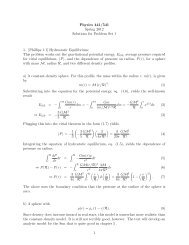MasteringPhysics: Print View with Answers
MasteringPhysics: Print View with Answers
MasteringPhysics: Print View with Answers
You also want an ePaper? Increase the reach of your titles
YUMPU automatically turns print PDFs into web optimized ePapers that Google loves.
Exercise 23.29<br />
Description: A uniform electric field has magnitude E and is directed in the negative x direction. The potential difference between point a (at x= x_a)<br />
and point b (at x= x_b) is V. (a) Which point, a or b, is at the higher potential? (b) Calculate the...<br />
A uniform electric field has magnitude E and is directed in the negative x direction. The potential difference between point a (at x = 0.70 m ) and point b<br />
(at x = 0.95 m ) is 260 V .<br />
Part A<br />
Which point, a or b, is at the higher potential?<br />
ANSWER:<br />
a<br />
b<br />
Part B<br />
Calculate the value of E.<br />
Express your answer using two significant figures.<br />
ANSWER:<br />
E = = 1000<br />
N/C<br />
Part C<br />
A negative point charge q = −0.200 µC is moved from b to a. Calculate the work done on the point charge by the electric field.<br />
Express your answer using two significant figures.<br />
ANSWER:<br />
W = = −5.2×10 −5<br />
J<br />
Electric Fields and Equipotential Surfaces<br />
Description: Find the work done to move a unit charge from and to given points on a diagram showing equipotential surfaces, and compare the<br />
magnitude of the electric field at these points.<br />
The dashed lines in the diagram represent cross sections of equipotential surfaces drawn in 1 V increments.<br />
Part A<br />
W AB<br />
C


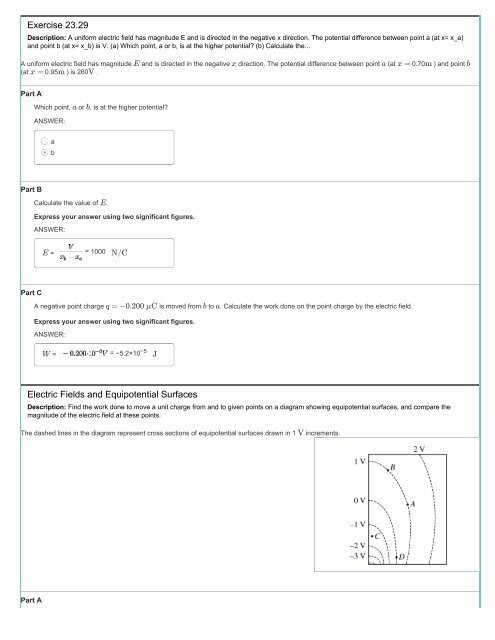

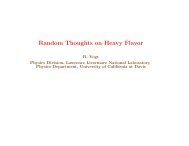
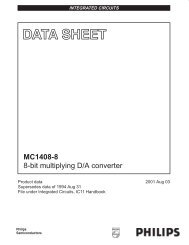

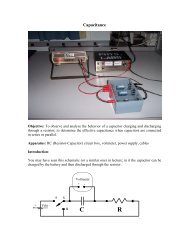


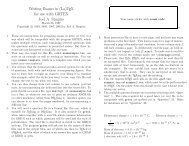
![More Effective C++ [Meyers96]](https://img.yumpu.com/25323611/1/184x260/more-effective-c-meyers96.jpg?quality=85)



